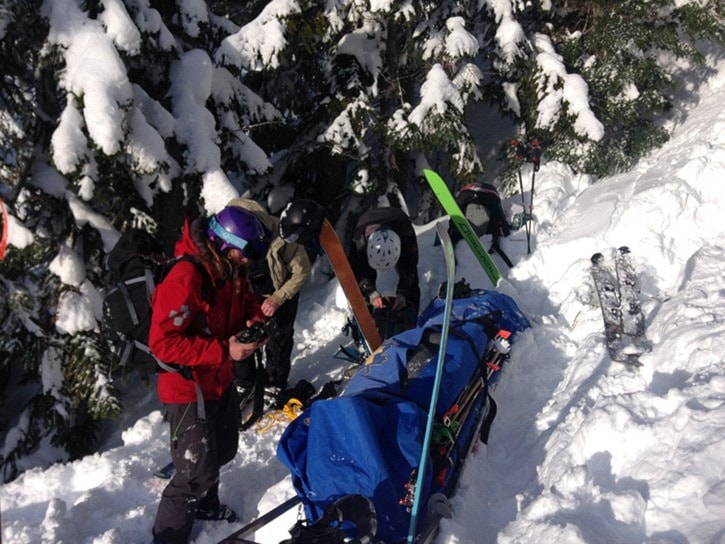Terrace Search and Rescue team members called in a helicopter and used a risky technique called ‘hot loading’ to help them move an injured skier from the Shames Mountain area March 6.
The skier was in the backcountry and was in severe pain because of an injured knee and unable to make it down steep terrain, reports Terrace Search and Rescue president Dwayne Sheppard.
Terrace Search and Rescue received a call from the RCMP just before 4 p.m. March 6, and at 5 p.m. sent a Lakelse Air helicopter with a search and rescue paramedic and an avalanche technician.
“Once the helicopter crew located the group on the snow covered slope, the helicopter landed to load the injured skier. Because of deep snow conditions, full shut down of the helicopter for safer loading of the patient and crew could not be conducted,” said Sheppard.
“As a result, the field crews and Terrace SAR crew had to hot load the patient onto the helicopter. Hot loading is with blades moving and helicopter under power.”
“This is normally a risky manoeuvrer under the best of conditions but on a deep snow cover slope the risk increases,” Sheppard continued.
He said the experience of the field crew, which included a helicopter pilot and a paramedic/avalanche technician, helped in making the rescue safer. Also on hand to render assistance were members of the Shames Mountain ski patrol.
The injured skier was then flown down to meet a waiting ambulance at the Hwy16/Shames Mountain turn off and from there was taken to Mills Memorial Hospital.
The helicopter returned to its hangar while the field crew trekked back to the ski hill.
“If weather conditions were different and the patient had to be transported over ground, this operation would have lasted well into the night and would required twice the number of people involved, and at greater risk to all,” said Sheppard, noting that there were dangerous avalanche conditions.
“Their skills and experience made this a safe and efficient rescue effort,” said Sheppard of all those involved.
